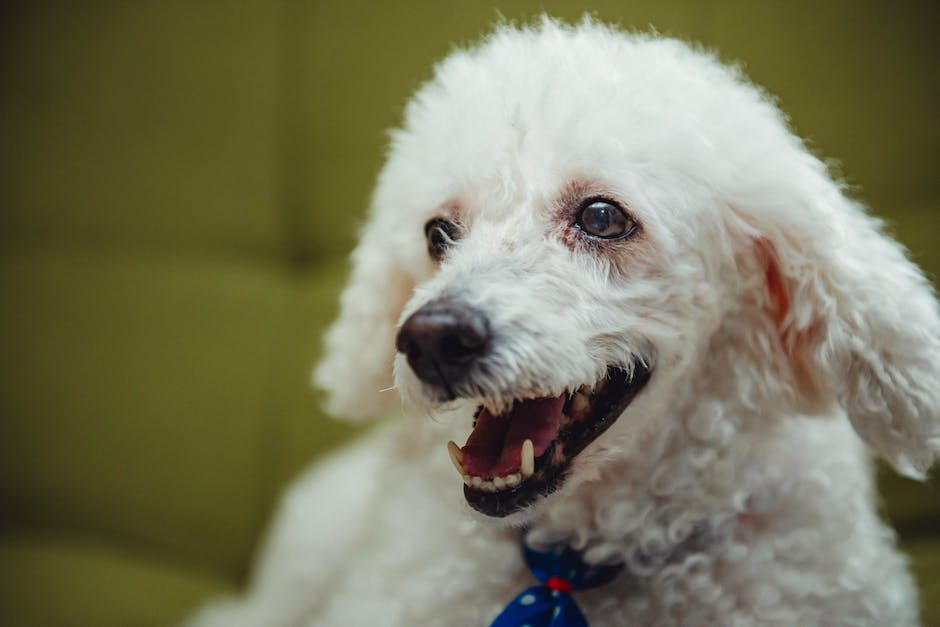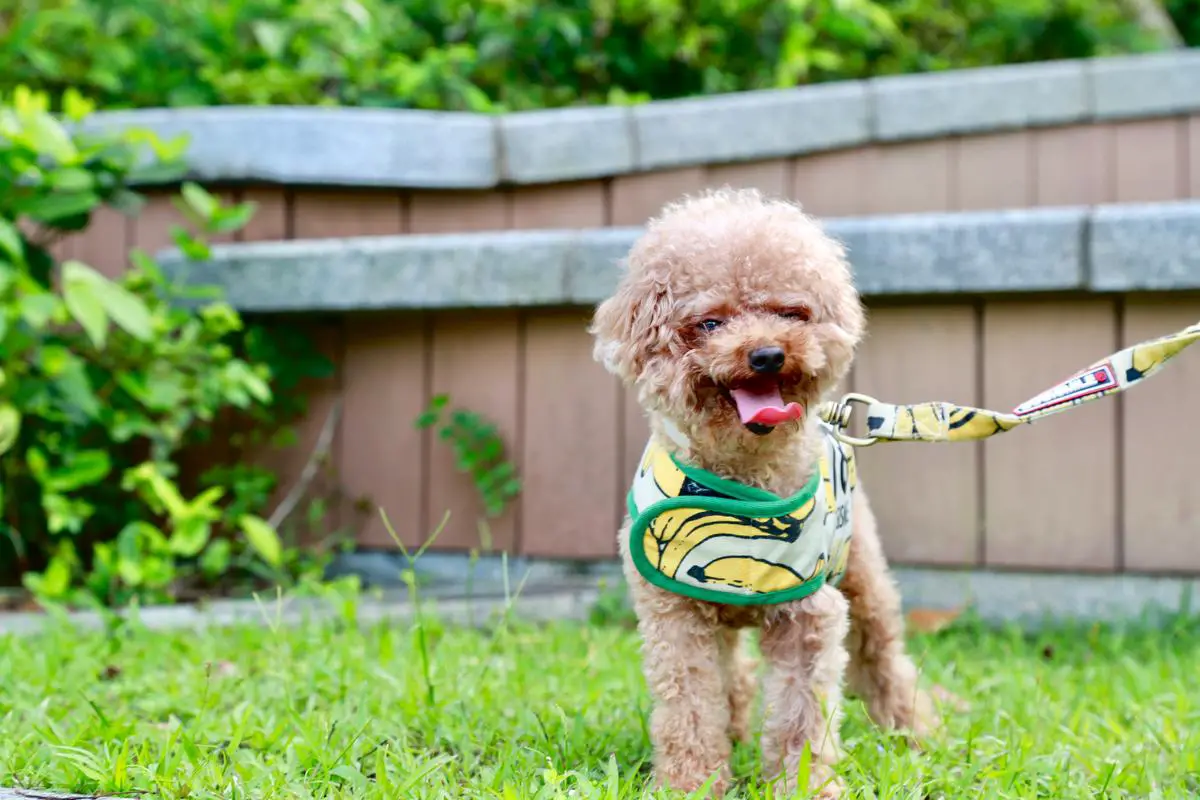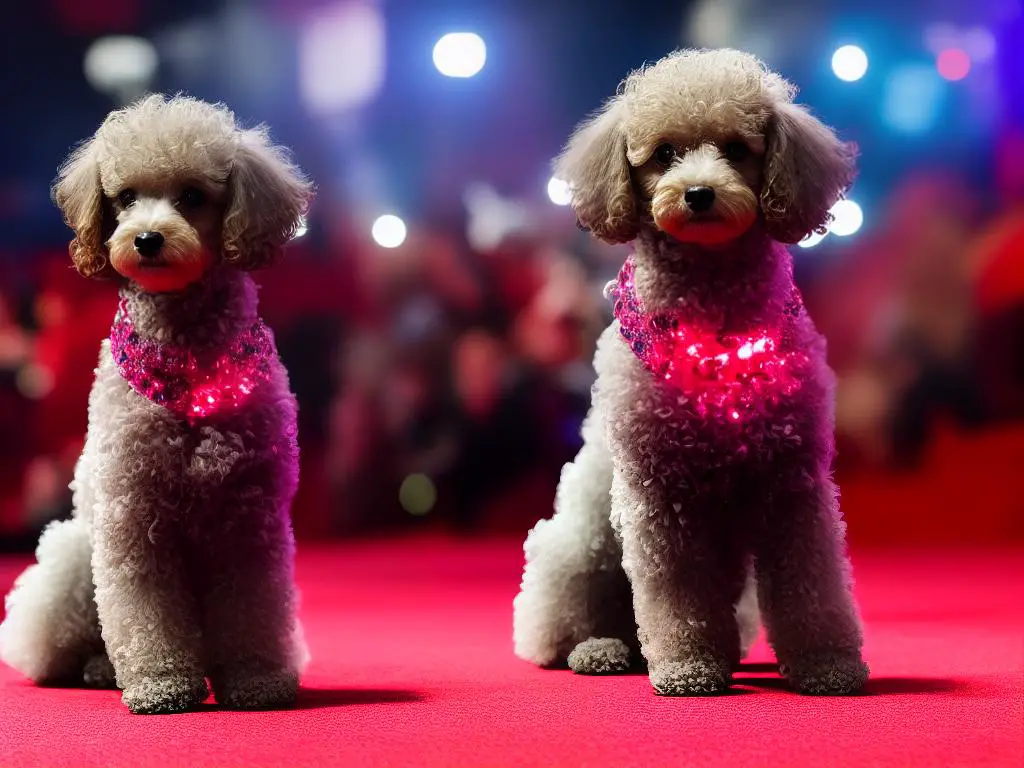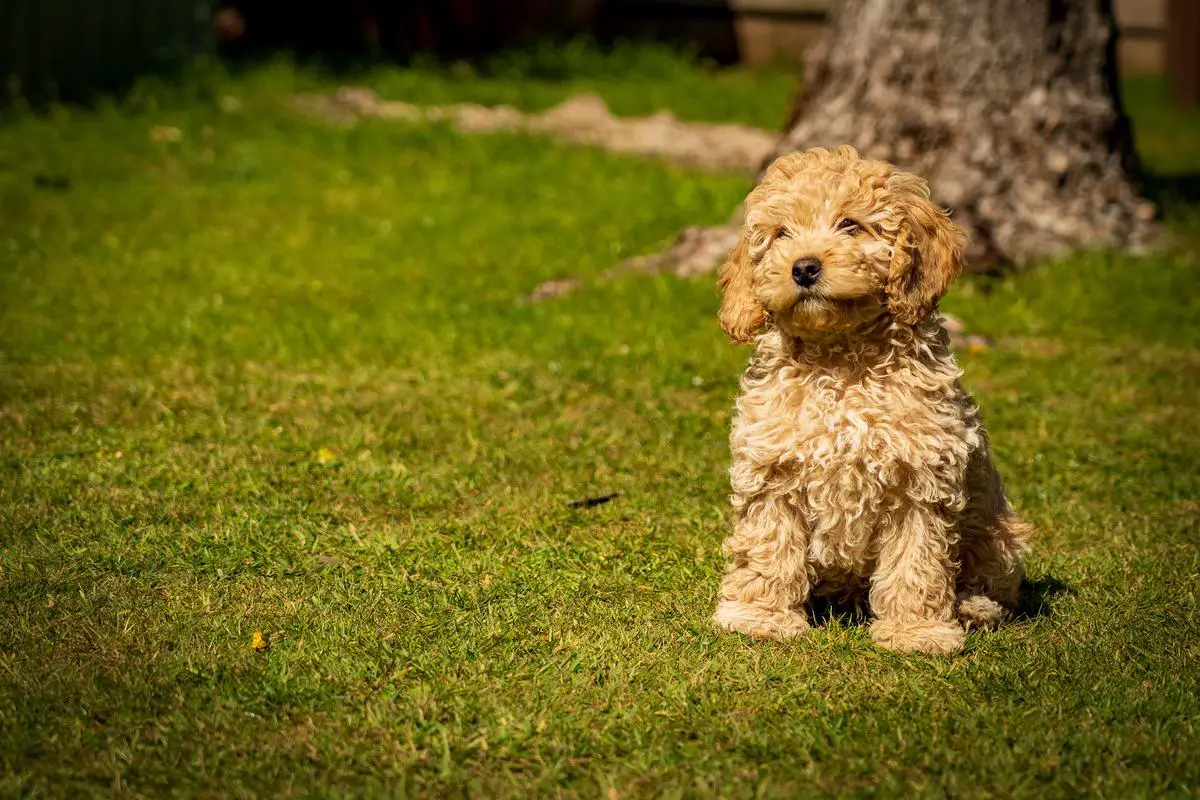The Fascinating History of The Teacup Poodle
The extraordinary journey of teacup poodles, from their origin to their current status, is a fascinating study in the evolution of canine breeds. Miniature in stature but not in spirit, these petite canines share their roots with their traditional poodle counterparts, yet have come into their own, boasting unique characteristics and development. From their mysterious inception to their role in shaping popular culture, breeder practice changes and current relevance, the history of teacup poodles offers a captivating insight into the dog world.
Origins of the Teacup Poodle
Origins of the Teacup Poodle
Digging into the history of the Teacup Poodle requires first understanding its parent breed: the Poodle. Originally bred in Germany for retrieving waterfowl, Poodles were prized for their intelligence and exceptional swimming skills. Their elegant and unique coat was not just for show – it was designed to protect their joints and vital organs from the cold while they worked in water. The Poodle later gained significant popularity in France, hence the common association with the country, and was declared the national dog.
Poodles come in three officially recognized sizes: Standard, Miniature, and Toy, each bred for specific functions and purposes. As dogs were used less for work and more for companionship and domestic purposes, smaller versions like the Miniature and Toy poodle became increasingly popular.
Development of the Teacup Poodle
The Teacup Poodle isn’t officially recognized as a separate breed or size by most kennel clubs. It’s essentially a miniature version of the Toy Poodle, typically weighing between 2 to 4 pounds and standing less than 9 inches tall. The term “teacup” is used more as a descriptor to provide prospective owners an idea of their tiny size – small enough to fit into a teacup.
Creating such a small dog wasn’t a move driven by functional need, like the creation of the earlier Poodle varieties. Rather it was driven by the desire for even tinier, more adorable versions of already small, highly affectionate, and intelligent pets. They were selectively bred from the smallest Toy Poodles, a process that took many generations to achieve consistently tiny offspring.
The Rise of Teacup Poodles as a Popular Breed
Pinpointing the exact point in time when these diminutive poodles surged in popularity is challenging, but it cannot be denied that the early 2000s saw a significant rise in the appeal of teacup-sized canines across the globe. This trend was particularly prominent in the United States, where a number of high-profile individuals showcased their love for these small-sized companions. The compact stature of these dogs proved to be exceptionally conducive for travel and city dwelling.
The unique charm of the Teacup Poodles lies not only in their size but also in their enduring poodle attributes – hypoallergenic coats, clever and vivacious nature, and the unmistakable poodle physique. Despite ongoing discussions revolving around the ethicality of breeding canines to such diminutive sizes and the health issues typically related to such small breeds, Teacup Poodles have managed to retain their popularity over the years.

Physiological Development Over the Years
The Backstory and Evolution of the Breed
The origins of Teacup Poodles, which have been painstakingly bred through the years to maintain their compact size, remain a topic of debate. Both France and Germany claim this breed as their own. Some argue that they are descendants of the French Barbet dogs, while others contend that they hail from the line of ancient European water dogs. Regardless of their disputed heritage, it is undeniable that Teacup Poodles have undergone significant changes in size, coat, and color over the centuries due to selective breeding practices.
Early Poodles: Size and Coat
Traditional Poodles, recognized as Standard Poodles, were significantly larger than Teacup Poodles and were initially used as water retrievers, particularly in Germany. Also, their iconic haircut that we associate with Poodles today wasn’t merely a fashion, but served a practical purpose: protect critical areas from cold water while decreasing overall water resistance, therefore facilitating agility and speed.
Emergence of Smaller Poodle Varieties: Miniature and Toy Poodles
The notion of smaller Poodles was birthed during the late 19th century in America. The small-sized Poodles, termed Miniature Poodles, stood somewhere between 10-15 inches tall. A few decades later, Toy Poodles earned popularity boasting a more reduced size of around 10 inches or less. Both Miniature and Toy Poodles retained much of the coat and color properties of their larger predecessor, but their small size made them expert companions and entertainment figures, unlike the traditional Utility dog.
The Advent of ‘Teacup’ Poodles
The term “Teacup Poodle” is a colloquial marketing term popularized in the late 20th century to describe the smallest of the Toy Poodles, typically standing 9 inches or smaller and weighing no more than 6 pounds. This buzzword appealed to customers seeking the smallest companion dogs, which increased their demand. Contrary to the Standard Poodle, these super tiny Poodles are bred exclusively for their size and companion qualities, often at the expense of their health.
Teacup Poodles: Physiological Changes
Teacup Poodles, although adorable, are not a recognized breed variant by many breed organizations, such as the American Kennel Club. This is primarily due to the health issues linked with their minute size. Their tiny bone structure leads to increased fragility, a heightened risk of injuries, and vulnerability to various health issues. Health conditions like hypoglycemia, heart diseases, respiratory issues, unbelievable jaw fragility – causing tooth decay and loss at an early age, and digestive problems are grim realities of Teacup Poodle’s lives.
In terms of color and coat, Teacup Poodles mostly share the same diverse range of coat colors with their larger counterparts. The spectrum runs from solid black, to white, grey, brown, apricot, and silver. Yet, due to inbreeding practices often adopted to achieve their small sizes, some colors are prevalent over others.
An Overview
It is important for enthusiasts, novices, and potential owners to understand that Teacup Poodles, despite their diminutive size, share the same biological structure as their larger counterparts. Breeders, over generations, actively selected the smallest dogs to create this breed, significantly impacting their health, color, and coat. A sincere devotee or pet lover must always consider the health implications and ethical questions tied to the breeding of Teacup Poodles, instead of merely focusing on their aesthetic charm.

Photo by alisonpang on Unsplash
Teacup Poodles in Pop Culture
Teacup Poodles and the Spotlight
Teacup Poodles, a variant smaller than the toy poodle, with their cute, irresistible looks have become the apple of the media’s eye. Their appearances in films and TV shows, oftentimes adorably attired, have reinforced them as ‘designer dogs’. This depiction has significantly contributed to their rising fame and demand.
One legendary instance of a teacup poodle in media is Fifi, from the popular animated series ‘Rugrats’, who became popular as the pet of antagonist Angelica Pickles. Fifi may have been portrayed as a standard poodle onscreen, but the inspiration for her character was a teacup poodle, owned by a crew member behind the scenes.
Influence of Famous Personalities
Teacup poodles gained an even bigger boost in popularity in the world of pop culture, primarily due to their association with famous personalities throughout history.
Famous actor and singer, Frank Sinatra, was known for his love of teacup poodles and owned a significant number of them. His love for these delightful creatures played a key role in enhancing the breed’s status in the 1960s, a period when Sinatra was at the peak of his career.
Modernly, celebrities like Paris Hilton and Kelly Osborne have been seen with teacup poodles, keeping the breed in the public eye and boosting their popularity.
In addition, revered fashion designer Dior has been known to feature teacup poodles in fashion shows. These occasions provide the teacup poodle with a higher profile among the style-conscious, thus expanding its popularity beyond the entertainment industry.
The Shift in Teacup Poodle Popularity
As the influence of teacup poodles in pop culture has steadily grown, their popularity has naturally followed suit. Once recognized as status symbols and luxury pets, the demand for these dogs saw a significant increase. Breeders scaled up their production of teacup poodles to meet this demand, presenting a host of ethical concerns.
This rising popularity has unfortunately resulted in a surge of “puppy mills”, where dogs are often bred in subpar conditions, and genetic health issues due to inbreeding are these adverse effects are not unique to teacup poodles, the amplified demand for this breed has made them a prime target for such unethical practices.
Nevertheless, the increased visibility of teacup poodles in popular culture isn’t entirely negative. Their endearing qualities have captured the hearts of many people worldwide, raising awareness about the breed and encouraging more potential pet owners to consider welcoming a teacup poodle into their homes.
In essence, teacup poodles have become an inseparable part of popular culture, courtesy of their appearances in various forms of media and affiliations with famous personalities. This popularity spike has had its share of pros and cons for the breed. However, through responsible breeding and ownership, teacup poodles continue to be a much-loved choice for many pet owners.

Present Day Teacup Poodles
Modern Teacup Poodles: A Richly Diverse and Impressively Adaptable Breed
In recent times, teacup poodles have been creating a unique space for themselves within the canine community. Initially bred in Europe to serve as water retrievers, their reduced stature that we see today came about through numerous generations of selective breeding. Today, reputable canine organizations like the American Kennel Club (AKC) largely determine their breed standards.
Breed Standards – Emphasis on Size and Temperament
The breed standards for teacup poodles have evolved significantly over the years with particular emphasis on their size and temperament. As per the AKC, poodles are typically categorized into three primary size groups – standard, mini, and toy. However, the teacup variation, although not officially recognized as a separate category, is essentially a particularly small toy poodle. While the standard for a toy poodle is 10 inches and under at the shoulder, a teacup poodle is expected to stand under 9 inches.
Despite their diminutive size, teacup poodles are extraordinarily high in energy and exude a vivacious, spirited personality. They are known for their keen intelligence and are rated as one of the two most intelligent breeds in the world.
Popularity of Teacup Poodles
Teacup poodles enjoy a certain popularity in the contemporary dog-loving community due to their compact size, charming looks, and friendly demeanor. They are especially preferred by city dwellers and people living in apartments. Their small size makes them easy to manage even within limited spaces. Moreover, they are hypoallergenic, making them a preferred choice amongst individuals with allergies.
Celebrity dog culture too has contributed to the popularity of teacup poodles. The influencing power of celebrities like Paris Hilton and Rihanna, who have been spotted with their teacup pets, has driven the demand for small, cuddly dogs that can be carried around easily and fit into the urban lifestyle seamlessly.
Roles in Today’s Society
Teacup poodles seamlessly fit into a wide spectrum of roles in today’s society, ranging from companionship to participation in dog shows. Their affectionate and social nature makes them wonderful companions. They easily get along with people of all age groups, making them the go-to breed for family pets. Many are also used as therapy dogs due to their calming presence and intelligence.
Given their agility and intelligence, teacup poodles are often seen in agility and obedience competitions. Despite their petite size, they are capable of performing tasks that often overshadow their larger counterparts. Even in dog shows, teacup poodles are often the center of attraction due to their elegant gait and stylish coats.
In conclusion, the teacup poodle breed has proven to be versatile, adaptable, and increasingly popular in contemporary society. Despite their small size, they have big personalities and a myriad of abilities that go beyond being just household pets.

Photo by jannerboy62 on Unsplash
Tracing the rise, transformation, and present state of teacup poodles reveals a complex tapestry of genetic adjustment, breeders’ ingenuity, and societal trends. Their distinctive physical features and charm have not only made them a lovable addition to many homes but have also secured them a place in society’s consciousness through screen appearances and celebrity ownership. Today’s teacup poodles, though significantly modified from their original breed standard, continue to delight enthusiasts with their personality and charm, all the while serving various roles in society, from mere playmates to show-stopping competitors. Their presence leaves no doubt; the teacup poodle holds a firm pawprint in the expansive history of canine breeds.
